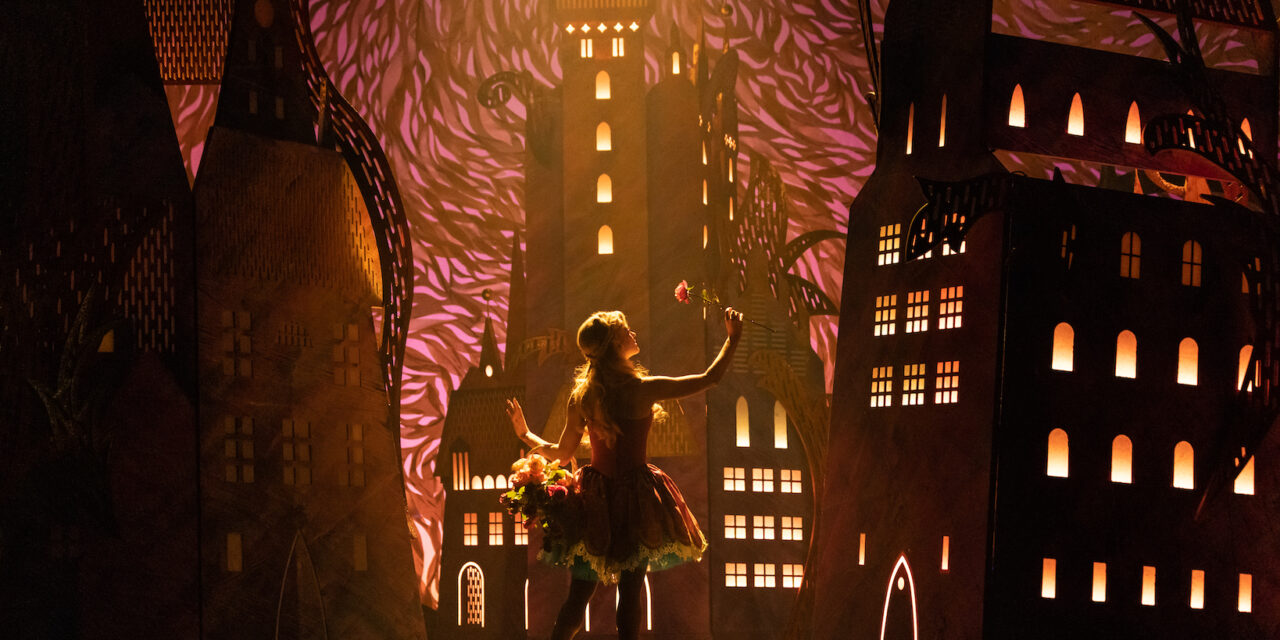By Samuel L. Leiter . . .
Sadly, the past week has been tragic for Andrew Lloyd Webber (Phantom of the Opera), the English baron who has been Broadway’s most commercially successful composer of the last half century. Last Thursday, his latest musical, Bad Cinderella opened at the Imperial Theatre on Broadway. Originally called simply Cinderella, it had run for a year in London after being plagued by two Covid postponements and a controversy surrounding its closing. Here in New York, Thursday’s opening was greeted by a tornado of negative reviews. The baron was unable to attend the Broadway opening because he was in England at the bedside of his mortally ill son. On Saturday, Nick Lloyd Webber, 43, passed away from gastric cancer.
The audience at the Sunday matinee I attended responded to the show with warmth, many often whooping loud encouragement, as if watching “America’s Got Talent.” There may very well be an audience of Lloyd Webber fans large enough to keep even theatrical flat tires turning. To be honest, the critical sniping summed up by reference to the use of “bad” in the new title has much truth in it, even if Bad Cinderella isn’t that bad. It’s lavishly produced, with expensive sets by Gabriela Tylesova providing fairytale spectacle showing a town square, the woods, a palace, and so on; splashily colorful costumes, also by Ms. Tylesova, combining pumped up takes on traditional period styles crossed with overtly modern features (including having most of the men baring chiseled torsos, even when wearing long coats); cutting-edge, concert-like lighting by Bruno Poet; fanciful wigs and hairdos by Luc Verschueren, and all the other required flashy visual accouterments.
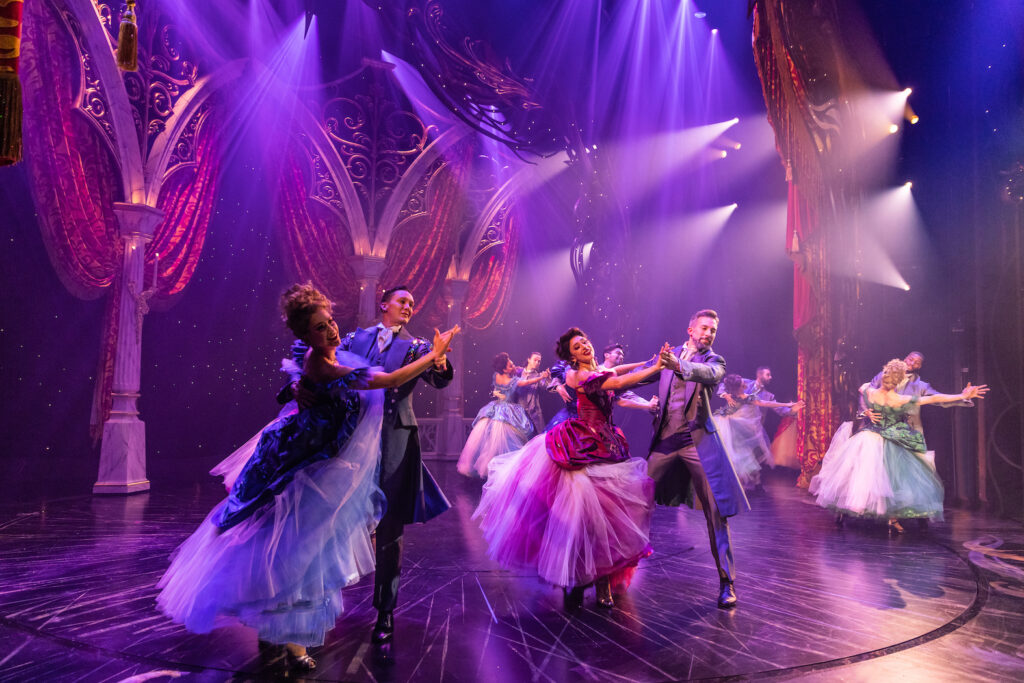
Further, while David Zippel’s lyrics, ranging from comically satiric to romantically extravagant, flicker more often than they gleam, Lloyd Webber’s music still possesses the popular touch in crafting richly melodic ballads and bouncily rhythmic tunes, often suitable for choreographic expression. Joann M. Hunter is responsible for the lively, if unsurprising, dances (twerking included), several of them large-scale (like the waltz in the anticipated ballroom scene) taking advantage of a revolving stage. Nor can the extensive company be faulted for a lack of singing, dancing, and acting talent, each of those abilities found in the eye-catching ensemble as well as the principals.
The problem is that so much of this talent—both performative and creative—serves a libretto adapted by Alexis Scheer from an original story and book by Emerald Fennell that is the unabashed apex (or nadir) of banality. Recent years have seen a plethora of fairytale and fantasy sources—much of it inspired by children’s stories, as per the Disney catalog—turned into Broadway musicals, often with a subversive adult tone mined for social, sexual, or political satire. That seems to be the goal of Bad Cinderella, which takes liberties with the classic Cinderella story (given a far more effective rendering in Rodgers + Hammerstein’s Cinderella in 2013), but never rising sufficiently to the occasion to justify the effort. Even with its occasionally risqué moments, Bad Cinderella remains a kid’s show smeared with a mildly naughty veneer. (For a much hotter Cinderella see Austin McCormick’s 2015 version here.) Why did the musical baron choose this timeworn material without some greater purpose in mind? You might as well ask: how did they build the pyramids?
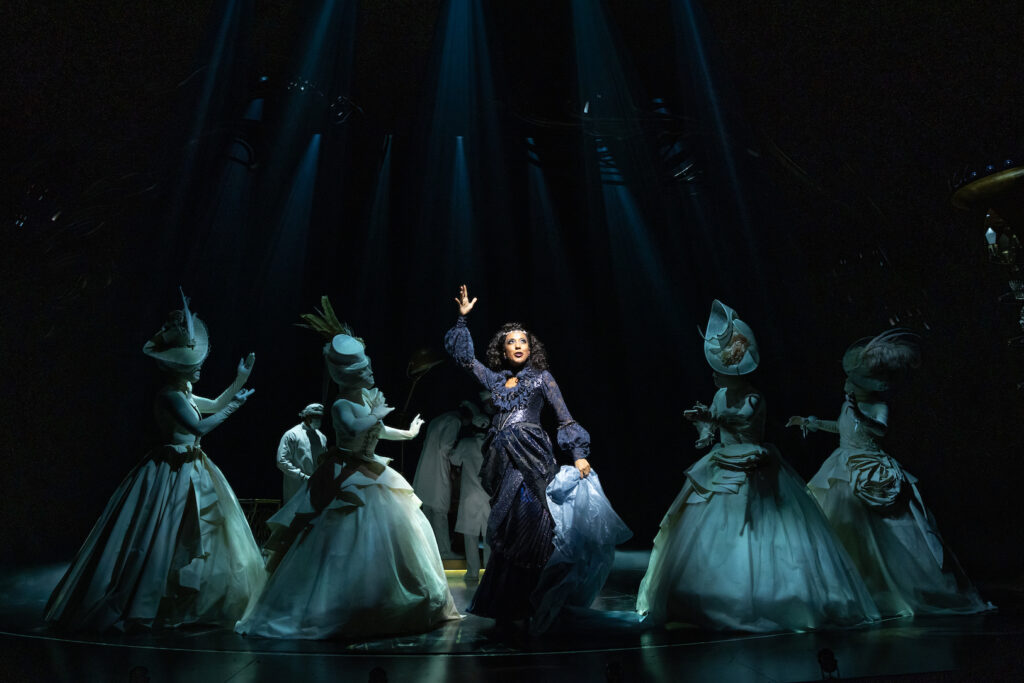

The two-and-a-half-hour show, taking place in Belleville, France, presents Cinderella (Linedy Genao, a delicious takeaway) as the abused but rebellious maidservant, proud to sing of being “Bad Cinderella,” of a comically wicked Stepmother (Carolee Carmello), who favors her Valley Girl-accented, airhead daughters, Adele (Sami Gayle) and Marie (Morgan Higgins). When Prince Charming, esteemed by his kooky mother, the Queen (Grace McClean), and the populace as a beau ideal (“Man’s Man”), is thought to have died in battle with a dragon, his nerdy brother, Prince Sebastian (Jordan Dobson), becomes heir to the Belleville throne, where, as “Beauty Is Our Duty” reveals, good looks are a supreme goal. In this narcissistic paradise, the well-muscled townsmen work out at the Hunks’ Gymnasium.
The outspoken Cinderella and Sebastian, childhood friends, are falling in love, although Cinderella is not yet aware of it. The Queen insists that a ball be held at which Sebastian will select a bride by kissing her at midnight. The brunette Cinderella, helped by a fairy Godmother (Christina Acosta Robinson), is transformed into a blonde bombshell in a silver-sequined gown and silver shoes, as if such is the epitome of feminine pulchritude. Logic be damned, of course, since Ms. Linedy—regardless of our being asked to consider Cinderella a plain Jane—is as strikingly attractive in her Goth ensemble of leather jacket, tights, and boots as in her more classically glamorous duds. Sebastian himself acknowledges this when he fails even to recognize or be attracted to her gussied-up version. Whatever argument is being made in defense of nonconformity to standards of beauty is belied by a Cinderella who needs no glitz to glow.
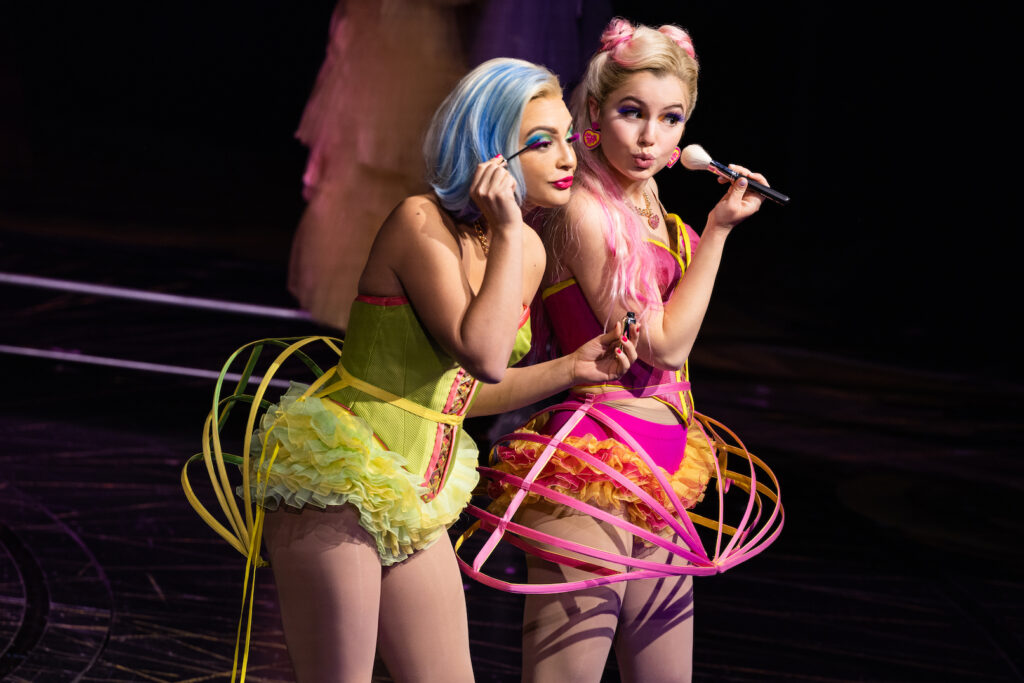

At the Stepmother’s prompting, one of her daughters grabs the winning kiss, beating Cinderella to Sebastian’s lips, but, when the stepsister and the unhappy princeling are about to tie the knot—spoiler alert!—the missing Prince Charming (Cameron Loyal, a genuine find), prominent pecs pulsating and boulder biceps bulging, returns and marries his own partner instead; given his unexpected gender choice, the politically incorrect might argue that this is appropriate for a “fairytale.” Sebastian is released from his vows, he and the disappointed Cinderella reunite after additional complications, the Stepmother is disgraced, and everyone else lives happily ever after.
Under the more-is-better direction of Laurence Connor, who staged the London original, the actors chew the scenery as if it were beef jerky, bloating comic bits to bursting, and singing every song as if their lives depended on it. Sebastian’s overproduced power solo, “Only You, Lonely You,” is a good example of such excess; we get a grandiose aria when a simpler, more poignant rendition would have been far superior. Ms. Carmello and Ms. McClean, as farcically dueling mothers (their highlight is the broadly droll duet, “I Know You,” in which they taunt each other about their unsavory pasts), openly compete for laughs, making one long for an occasional throwaway instead of a hand grenade to crack our smiles. But nuance and subtlety are unknown where the point is to speak and sing loudly and carry a big shtick.
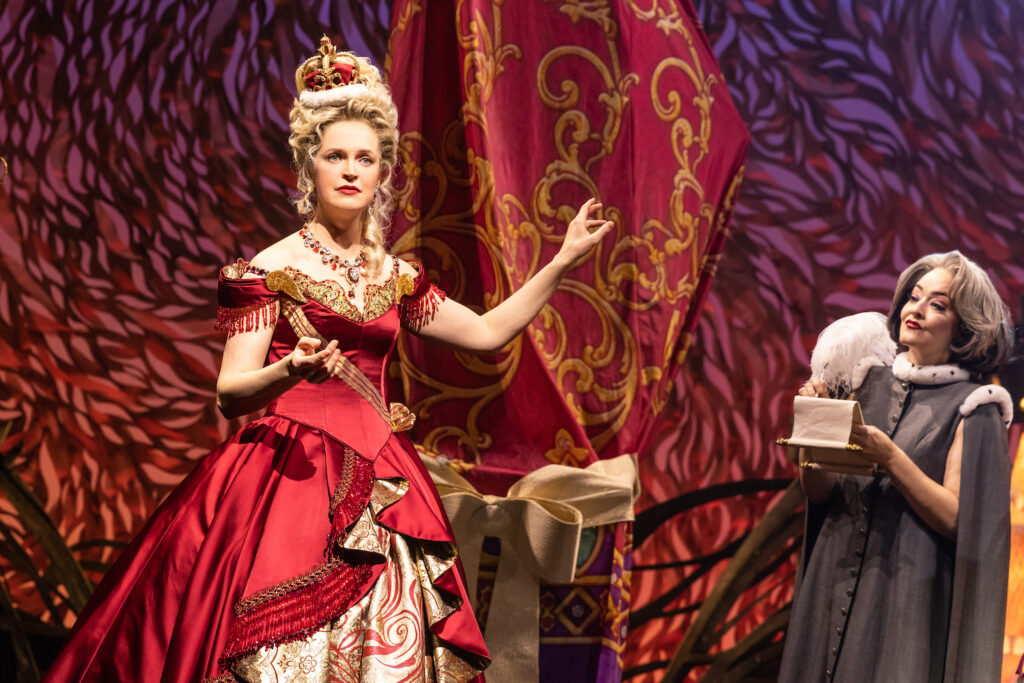

Bad Cinderella is a trite, inflated children’s show, with a wit and intelligence quotient that does little to enhance Broadway’s IQ. For that, you’d do yourself a favor by seeing the show directly across the street, Parade, instead.
Bad Cinderella. Open run. At the Imperial Theatre (249 W. 45th Street, between Broadway and Eighth Avenue). www.badcinderellabroadway.com
Photos: Matthew Murphy and Evan Zimmerman


